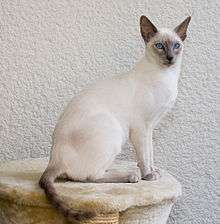Latest News for: vietnamese
Edit
Joint program propels more Vietnamese students to Master's success
Vietnam News 22 Mar 2025
Additional 164 Vietnamese students have earned master’s degrees from Teaching English to Speakers of Other Languages (TESOL) joint programme between the HCM City Open University (HCMCOU) and the Edith Cowan University in Australia.
Edit
Quang Vinh aims to join Vietnamese national team
Vietnam News 21 Mar 2025
I am Vietnamese, and I am very proud to receive my citizenship ... HÀ NỘI — French-born player Cao Quang Vinh of Hà Nội Police Club has shared his primary goal after being granted Vietnamese citizenship.
Edit
Vietnamese official congratulates LPRP on 70th anniversary
Vietnam News 21 Mar 2025
HÀ NỘI — A Vietnamese delegation led by Deputy Director of the General Department of Politics of the Vietnam People’s Army Sen ... The Vietnamese Ministry of National Defence always highly values its ...
Edit
A Warm Welcome to the Vietnamese Ambassador and First Secretary at Comarch (Comarch SA)
Public Technologies 21 Mar 2025
) A Warm Welcome to the Vietnamese Ambassador and First Secretary at Comarch ... On March 14, 2025, we had the honor of hosting the Vietnamese Ambassador to Poland, His Excellence Ha Hoang Hai, and First Secretary Bach Van Nam at Comarch.
Edit
Cultural exchange showcases Japanese, Vietnamese traditions
Vietnam News 21 Mar 2025
The event also featured folk games from both cultures, such as Yabusame (Japanese horseback archery), Kingyo Sukui (goldfish scooping), and O an quan (Vietnamese stone game).
Edit
Vietnamese, Lao young border guard officers strengthen cooperation
Vietnam News 21 Mar 2025
... From March 22-24, Vietnamese and Lao young border guard officers will visit the tomb of General Võ Nguyên Giáp and explore cultural and historical sites in the province. — VNS. . . . .
Edit
Talk show on U.S. tariff response for Vietnamese firms set for next week
The Saigon Times 21 Mar 2025
Edit
LKYSPP and YST exchange MOUs with Vietnamese partners during NUS visit by Vietnam’s top leader (NUS - National University of Singapore)
Public Technologies 20 Mar 2025
Edit
Sales of Vietnamese doll plunge over face marking like China’s ‘nine-dash line’
The Guardian 20 Mar 2025
Edit
Vietnamese ex-surgeon who dismembered mistress gets death sentence
South China Morning Post 20 Mar 2025
The judges who presided over the case said Danh Son’s murder of the victim was ‘exceptionally brutal’ ... .
Edit
Vietnamese restaurant Ben Tre nears first San Francisco outpost
Business Journal 20 Mar 2025
The project has been simmering since at least 2023 ... .
Edit
Decree on foreign investment in Vietnamese financial institutions amended
Vietnam News 20 Mar 2025
01/2014/NĐ-CP regarding foreign investment in Vietnamese financial institutions. HÀ NỘI — The Vietnamese Government ... 01/2014/NĐ-CP regarding foreign investment in Vietnamese financial institutions.
- 1
- 2
- Next page »



